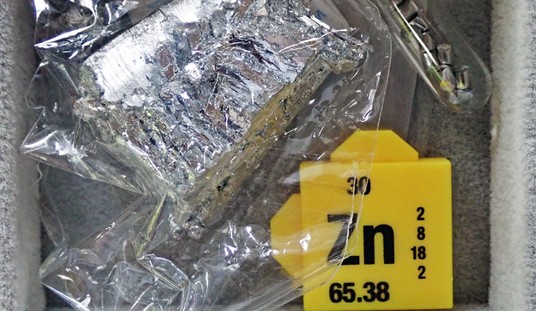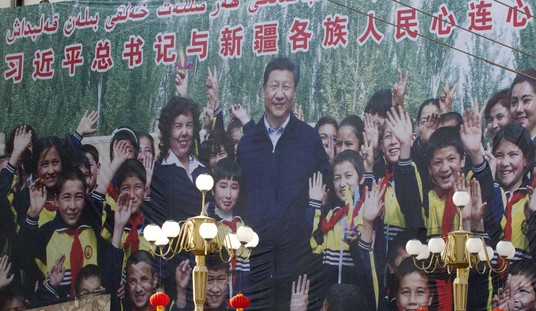Physics is a harsh business, and it does not respect international boundaries. A technology or device that isn't viable for a set purpose in one location won't be viable in another. Take, for example, wind and solar power, those "green" energy schemes designed to appease climate scolds. They can be useful in niche applications, sure, but on the grid level? You can't replace high-density energy sources with low-density energy sources, but that's precisely what the advocates for these schemes are trying to do.
The thing is, they keep failing. Over and over again. The latest such failure comes to us from Japan, where the Mitsubishi Corporation is pulling out of offshore wind projects in the waters near Chiba and Akita Prefectures.
Turns out they didn't properly assess how much power delivered from these mills would cost. Yoshihiro Muronaka, a Professional Engineer (Japan) in environmental systems with a master’s degree in chemical engineering from Osaka University, has brought the numbers.
In August 2025, Japanese media revealed that Mitsubishi Corporation was preparing to withdraw from three offshore wind projects off the coasts of Chiba and Akita prefectures. In 2021, Mitsubishi had won these sites with remarkably low bids of 8-11 cents/kilowatt-hour (kWh), hailed as proof of Japan’s corporate strength and renewable ambition.
But reality was harsh. Costs for steel, turbines, and logistics surged. The yen weakened, interest rates rose, and certification processes faced delays. By 2025, Mitsubishi had already booked over $350 million in impairment losses, with more likely if the projects continued. The retreat is not just a corporate failure; it exposes apparent self-contradictions in Japan’s energy policy.
Now, there are factors not directly related to the physics side of this, like the dropping yen, which makes all the materials cost more. The last time I was in Japan, in 2018, the American dollar was at about 98-100 yen. As of this writing, it's more than 150 yen to the dollar. That's great if you're an American tourist in Tokyo. It's not so great if you're doing business in an island nation that has to import a lot of its raw materials.
But the main point still applies: Wind power is intermittent, unreliable, and low-density. Mitsubishi, here, engaged in a rather uncharacteristic miscalculation. This scheme, once again, engages in the same old mistake: Trying to replace a high-density source with a low-density (and intermittent) source.
The debate over energy costs often centers on the Levelized Cost of Electricity (LCOE), which narrowly focuses on the cost of generating a kilowatt-hour of electricity. However, this metric fails to capture the broader economic realities encapsulated by the Full Cost of Electricity (FCOE). FCOE provides a more comprehensive assessment by incorporating additional factors such as the expense of backup power from fossil or nuclear plants to address the intermittency of renewable sources, the costs associated with grid expansion and balancing services to maintain stability, as well as subsidies, premiums, and public support schemes that often prop up certain energy technologies. Furthermore, FCOE accounts for the long-term costs of decommissioning, recycling, and environmental restoration, ensuring a more accurate reflection of the true economic and environmental impact of electricity production.
When these are included, offshore wind’s cost can be double or triple its LCOE.
Offshore wind’s LCOE is around 12–16 ¢/kWh, but when the full cost of electricity (FCOE) is considered, it rises to 20–30 ¢/kWh. Nuclear and gas remain much lower, at roughly 12–14 ¢/kWh and 10–12 ¢/kWh, respectively.
Whoops. Or, おっと, if you prefer.
It's not just Japan suffering from these bad calculations:
🇯🇵 Japan’s Offshore Wind Collapse: A Cautionary Tale for Climate Policymakers
— Freedom Research (@freedom_rsrch) October 13, 2025
Mitsubishi just canceled three major offshore wind projects, citing $350M+ in losses. Once hailed as proof of Japan’s green leadership, these projects are now a stark warning: climate ambition detached… pic.twitter.com/VUsB9BfSCQ
The post continues:
...climate ambition detached from economic reality is a recipe for failure.
Detached from economic reality is something of an understatement, as Mitsubishi is learning to its sorrow.
Read More: Huge California Solar Plant Shutting Down After Years of Failure
New: Trump Admin Cancels Another Big Solar Boondoggle
One would think a Japanese company, especially one with such a long and impressive history as Mitsubishi, would have its web-footed waterfowl arranged in a linear fashion a little better than this. But we should remember, these "green" energy schemes aren't being engaged because they are a leap forward in technology. Given present materials and construction, they are arguably a step backward, having lower energy density than the energy sources they claim to be replacing: Nuclear, gas, and coal.
Now Japan's economic situation is much different than America's. Their social situation is very different. They are a nation of over 123 million people, in an island nation 93.5 percent the size of California. Their national debt is shocking at $10.9 trillion, although, as a matter of percentage of GDP, not as bad as ours. But it's bad enough that they can't be squandering anything on bad ideas like this.
These schemes, we might argue, are well-intentioned, if ill-informed. But that argument is falling flat these days. We have seen, over and over, these green energy, climate scold-appeasing boondoggles start up, seen them fail, and seen them fall through - and somebody, somewhere, is stuck with the check. In some cases, it's the American taxpayer. In this case, it's Mitsubishi, a proud old Japanese company, and possibly the Japanese taxpayers who will get soaked.
Muronaka-san concludes:
For policymakers worldwide, Japan’s case should not be seen as an embarrassment, but as a warning and an opportunity: Energy transitions must be guided by facts, not hopes, if they are to be sustainable.
But they are not, at present, guided by facts. They are not guided by analysis, by a strict accounting of all the costs, all of the inputs and outputs.
That is why they fail.















